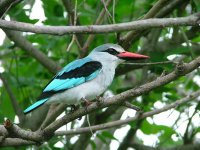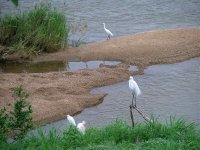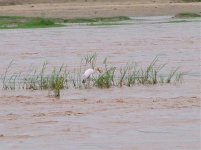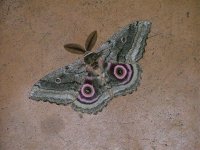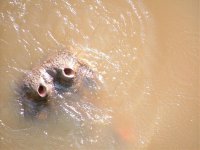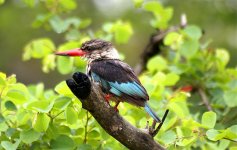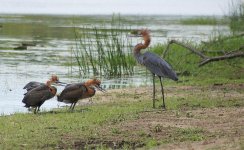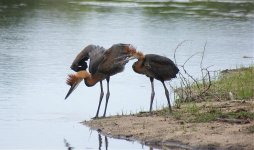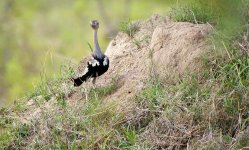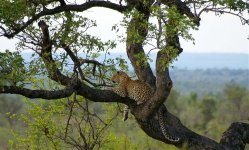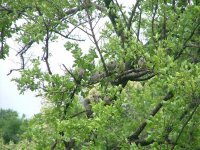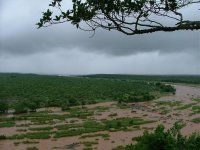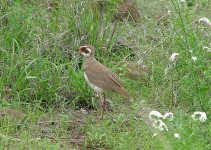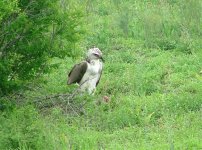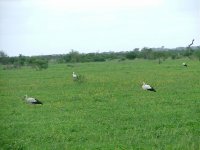Kruger Park, 12th-16th December 2009
Road trip, Letaba to Satara
Weather nowadays is fickle, no doubt about it. Having enjoyed a couple of days at Letaba with blue skies and a benign 33 degrees C, we awoke to strong winds, gusting rain showers, and a temperature around 14 degrees. Well, at least it wouldn't be too serious,for we would be transferring this day from Letaba to Satara, and it would be nice and cool in the car.
It wasn't only us that was peeved about the weather: most of the avian population, if this gang of Wattled Starlings (first picture) was anything to go by, felt exactly the same, and sought out shelter as best they could.
We saw little between Letaba and Olifants, where we stopped for a coffee break. The public area has been largely rebuilt, and was due to re-open the day after our visit. The best new feature is a fabulous elevated deck built around the trunks of the the trees which grew between the old restaurant building and the viewing position at the cliff edge. From here (providing it isn't bucketing with rain as it was during our visit) you wiill be able to sit at your table overlooking one of the finest views in Africa. Despite the weather, the view was still spectacular, and from the new deck we had an uninterrupted view of all the heavy rain coming up from the south to get us (second picture).
The Olifants River marks the boundary between the Mopane veld north of the river, and the savannah, mixed Acacia thornveld and grassveld to the south. This vegetation change mirrors a change in animal and bird types as well. Once out of the somewhat monotonous Mopane, with its relatively small number of specialists, there is an increase in species diversity which can make exciting birding. As we traversed the open, park-like plains south of Olifants, we spotted an obliging Bronze-winged Courser, a species which I had previously seen only at night (third photograph).
Some way further on, we were forced to halt because the biggest camera lens I had ever seen in my life was sticking out of the driver's window of a very small car. So big was this lens that the guy's wife was sitting in splendid isolation on the rear seat of this vehicle, her nose buried in a book, which neatly summed up her feelings about her husband's/boy friend's/brother's obsession. Clearly this thing was so large that when not in use, he needed the whole of the front seat to plonk it, thus banishing that nice lady to bored indifference in the back seat. Now what, we wondered, was this over-compensating photographer photographing? I inched forward, getting as close as I could to his car. And there was a juvenile Martial Eagle with bulging crop, enjoying his lunch (photo 4). He had been obscured by a small bush near the side of the road. Unfortunately his lunch was hidden in long green grass, so we could not make out what he/she had caught.
We drove on, with Red-backed and Lesser Grey Shrikes on virtually every bush. As we moved out onto open grassland we kept a particular eye out for Montagu's and Pallid Harriers. On a previous occasion we had spotted these grassland specialists, but at some distance, and ever since that day we had argued aboout which we had seen. The males can be distinguished if you get a good look, but the females are really hard to differentiate. Well, if we had been hoping to settle that question, we would be disappointed. Not a harrier did we see. As some compensation, small groups of White Storks patrolled the veld (Photo 5).
And so, with the weather lifting slightly, we came to Satara. What we did and saw there will be the subject of the next instalment.
Best wishes,
Dave
PS I hope the bloke with the world's biggest lens and the banished wife/squeeze/mistress wasn't one of you lot!




